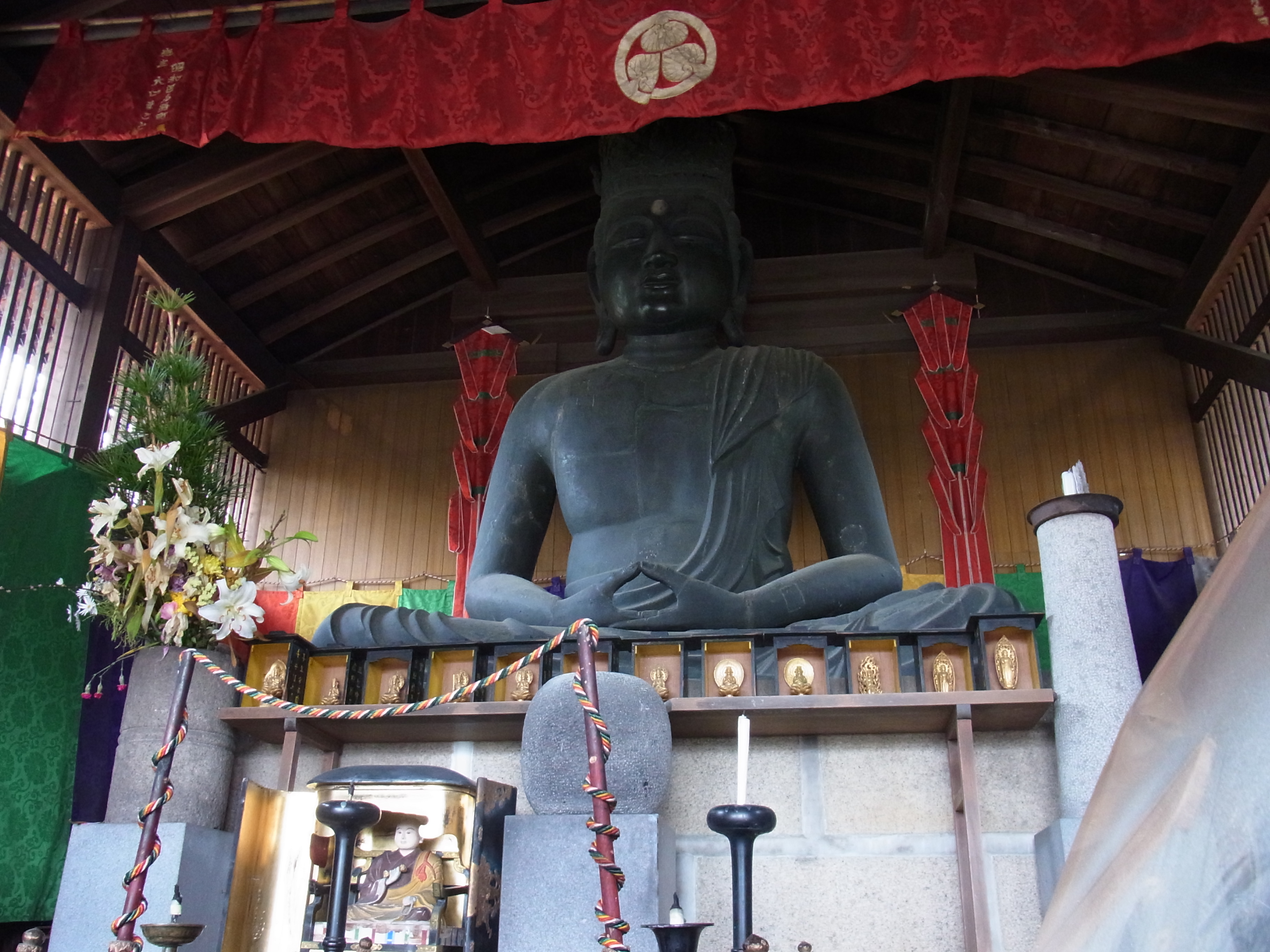Kōshō-ji, Nagoya on:
[Wikipedia]
[Google]
[Amazon]



 Kōshō-ji (興正寺) is a
Kōshō-ji (興正寺) is a
Homepage of Kōshō-ji
Buddhist temples in Nagoya Yagoto Articles containing video clips Kōyasan Shingon temples {{Japan-religious-struct-stub
Shingon Buddhist
Shingon monks at Mount Koya
is one of the major schools of Buddhism in Japan and one of the few surviving Vajrayana lineages in East Asia, originally spread from India to China through traveling monks such as Vajrabodhi and Amoghavajra.
Kn ...
temple located in Yagoto
is a neighbourhood that straddles Mizuho ward, Shōwa ward, and Tempaku ward in eastern Nagoya, central Japan.
History
The area is also known as Yagotoyama.
During the Edo period, the area thrived as a pilgrimage area with various temple ...
, Nagoya
is the largest city in the Chūbu region, the fourth-most populous city and third most populous urban area in Japan, with a population of 2.3million in 2020. Located on the Pacific coast in central Honshu, it is the capital and the most pop ...
, in central Japan
Japan ( ja, 日本, or , and formally , ''Nihonkoku'') is an island country in East Asia. It is situated in the northwest Pacific Ocean, and is bordered on the west by the Sea of Japan, while extending from the Sea of Okhotsk in the north ...
. It belongs to the Owari Thirty-three Kannon
The are a collection of Buddhist temples in western Aichi Prefecture, Japan, all dedicated to the bodhisattva Avalokitesvara (Kannon). The name is derived from Owari Province, the former name for the area. The list was created in 1955. ...
.
History
The temple was established by theTokugawa clan
The is a Japanese dynasty that was formerly a powerful ''daimyō'' family. They nominally descended from Emperor Seiwa (850–880) and were a branch of the Minamoto clan (Seiwa Genji) through the Matsudaira clan. The early history of this clan r ...
and dates to the 17th century. The temple and grounds of its attached graveyard are situated in the woodland on Yagoto Hill. The complex consists of a number of wooden buildings, which includes a five-storey pagoda completed in 1808. The pagoda is the oldest in Aichi prefecture and was designated an Important Cultural Asset in 1982.
The temple used to be the centre of what was a flourishing pilgrimage area.
The annual "1,000-Lantern Festival" at the harvest moon takes places at Kōshō-ji. Small popular flea-markets take place on the 5th and 13th of every month. The area around the temple has many restaurants such as the ''Kani-Dōraku'', bars and shops that are frequented by visitors and university students from nearby Nagoya University
, abbreviated to or NU, is a Japanese national research university located in Chikusa-ku, Nagoya. It was the seventh Imperial University in Japan, one of the first five Designated National University and selected as a Top Type university of T ...
, Chukyo University
is a private university in Aichi Prefecture, Japan, with campuses in Nagoya and Toyota. The main building is located in Yagoto, Shōwa-ku, Nagoya.
Notable faculty members
* Naomi Miyake, cognitive scientist
* Koji Murofushi, Olympic hammer t ...
, Nanzan University and Meijo University
is a private university in Japan. Its main campus is in Tempaku-ku, Nagoya, Aichi Prefecture, and it has two other campuses in Nagoya, Aichi Prefecture. It had two faculty members who were Nobel laureates as of 2021.
History
The name Meijō ...
.
The nearest subway station to the temple is Yagoto Station
is an underground metro station on the Nagoya Municipal Subway in Shōwa-ku, Nagoya, Aichi Prefecture, Japan, operated by the Transportation Bureau City of Nagoya. The station is located in part of the district of Yagoto.
Lines
Yagoto Station ...
.
Other temples within the immediate are of Kōshō-ji are Tokurin-ji, Saiko-in, Joshō-ji, Seigan-ji, Kōshin-ji, Hōju-in, and Hansobo Temple.
References
External links
Homepage of Kōshō-ji
Buddhist temples in Nagoya Yagoto Articles containing video clips Kōyasan Shingon temples {{Japan-religious-struct-stub